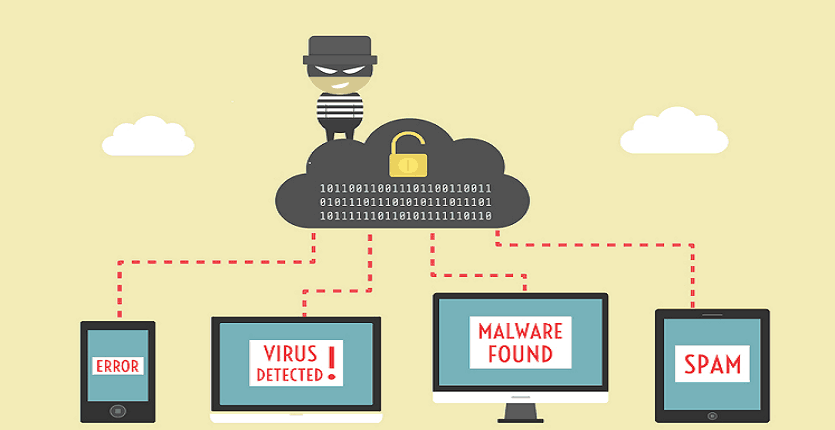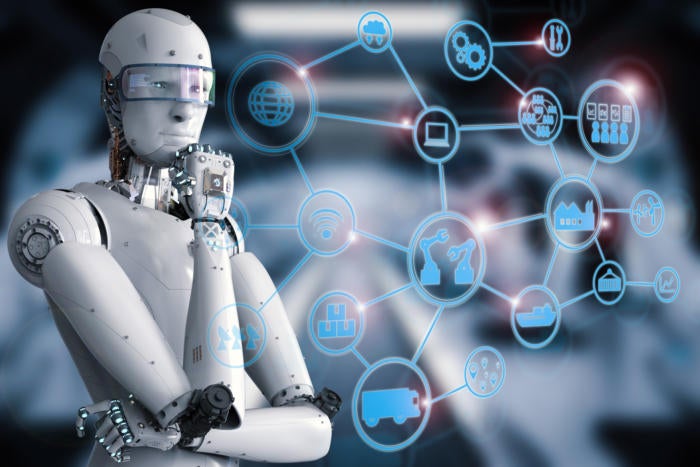A Guide to Agent-Oriented Programming and Strengthening Security Measures
Software agents are revolutionizing how we build secure systems by making autonomous decisions and protecting against threats. This is the essence of agent-oriented programming (AOP).
Traditional programming methods often fall short in addressing evolving security challenges. AOP introduces intelligent software agents that actively monitor, respond to, and prevent security threats in real-time. These digital guardians operate like vigilant security teams, with the added advantage of never needing a break.
Research from the Journal of Network and Computer Applications highlights that AOP represents a significant shift from conventional programming, especially in security management. Unlike traditional systems that react to threats post-incident, AOP enables proactive measures through autonomous agents that can anticipate and prevent breaches before they occur.
Agent-based systems are powerful due to their adaptability and evolution. Similar to how the immune system learns to recognize and fight new threats, these systems continuously improve their security responses through real-world experience. This self-learning capability is invaluable in today’s rapidly changing threat landscape.
Whether protecting sensitive data, managing complex networks, or securing critical infrastructure, AOP offers a sophisticated and practical approach to modern security challenges. As we explore this technology further, you’ll understand how intelligent agents work together to create robust, resilient systems capable of defending against even the most sophisticated threats.
Security Challenges in Multi-Agent Systems


Decentralized multi-agent systems have transformed how autonomous software agents collaborate and make decisions. However, this architectural freedom introduces significant security vulnerabilities that must be addressed. Interconnected agent networks face sophisticated threats that can compromise entire systems if left unchecked.
The distributed nature of multi-agent systems creates unique security challenges not seen in traditional centralized architectures. Establishing trust becomes complex when autonomous agents operate independently across networks. According to research published in Expert Systems with Applications, unauthorized access is one of the most critical threats, as malicious actors can infiltrate the system by compromising even a single agent.
Authentication is a fundamental concern in these distributed environments. Without robust verification mechanisms, malicious agents can masquerade as legitimate ones, leading to data breaches and system compromise. The challenge intensifies when agents need to establish trust dynamically with previously unknown agents—a common scenario in open multi-agent systems.
Data breaches pose another significant risk, as information flows constantly between agents during interactions. When one agent’s security is compromised, it can create a domino effect, potentially exposing sensitive data across the entire network. This risk is magnified by the autonomous nature of agents, which may make security decisions independently without central oversight.
Encryption protocols play a vital role in protecting agent communications, but implementing them effectively across a decentralized system presents challenges. Agents must negotiate secure connections dynamically while maintaining performance and operational efficiency. The complexity increases when agents operate across different platforms and environments, each with its own security requirements and constraints.
The decentralized nature of multi-agent systems introduces unique security challenges that go beyond traditional cybersecurity concerns. Successfully addressing these challenges requires a careful balance between autonomy and security.
Jung et al., Artificial Intelligence Review
Access control mechanisms require particular attention in multi-agent systems. Traditional role-based access control models often prove insufficient when dealing with dynamic agent interactions. More sophisticated approaches that can adapt to changing contexts and agent relationships are necessary to maintain system security while preserving operational flexibility.
Mitigating Security Risks in AOP
Agent-oriented programming introduces unique security challenges that require a robust and multi-layered approach to risk mitigation. As autonomous agents interact with systems and data, implementing comprehensive security measures becomes crucial for maintaining system integrity and preventing unauthorized access.
Strong access control mechanisms serve as the foundation for securing AOP systems. Organizations must implement role-based access control (RBAC) combined with attribute-based policies that govern how agents interact with system resources. Each agent should operate under the principle of least privilege, with access rights strictly limited to what is necessary for their designated tasks. As noted in a recent Gartner analysis, uncontrolled agent access represents one of the primary vectors for security breaches in AI systems.
Regular system audits play a vital role in maintaining security posture. Organizations should establish comprehensive audit trails that track agent activities, data access patterns, and system modifications. These audits help identify potential vulnerabilities and unusual behavior patterns that could indicate security threats. Automated monitoring tools can provide real-time alerts when detecting suspicious agent activities or policy violations.
Advanced encryption techniques represent another critical layer of protection. All agent communications and data exchanges should utilize strong encryption protocols to prevent unauthorized interception or manipulation. This includes encrypting data both in transit and at rest, implementing secure key management practices, and regularly updating encryption standards to address emerging threats.
Beyond these core measures, organizations should implement additional security controls such as agent authentication mechanisms, secure deployment practices, and incident response procedures. Regular security assessments help identify potential vulnerabilities before they can be exploited, while continuous monitoring enables rapid detection and response to security incidents.
To maintain long-term system resilience, security measures must evolve alongside emerging threats. This requires staying informed about new attack vectors, regularly updating security protocols, and fostering a security-first culture throughout the development and deployment process. By taking a proactive approach to security, organizations can better protect their AOP systems while maintaining operational efficiency.
Leveraging SmythOS for Secure AOP Development
Agent-oriented programming requires robust security measures alongside seamless development capabilities. SmythOS offers a comprehensive platform that transforms secure agent development.
SmythOS’s visual builder simplifies the development process. Developers can construct sophisticated agent behaviors through a drag-and-drop interface, reducing the risk of security vulnerabilities associated with traditional coding methods.
Enterprise-grade security controls form the backbone of SmythOS’s infrastructure. According to leading developers, “SmythOS implements robust security measures to protect sensitive data and ensure compliant agent operations.” This commitment to security is seamlessly integrated into the development workflow.
The platform’s built-in monitoring capabilities provide visibility into agent operations, which is crucial for maintaining security in production environments. Through a comprehensive dashboard, developers can track agent behaviors, performance metrics, and interaction patterns in real-time, enabling quick identification and resolution of potential security issues.
SmythOS’s automatic scaling capabilities manage resource allocation, ensuring optimal performance while maintaining security protocols as agent workloads fluctuate. This automated approach eliminates common security vulnerabilities from manual resource management.
The platform’s seamless API integration framework enhances its security profile by handling authentication, data transformation, and connection management automatically. This systematic approach to API security ensures that agent interactions with external services remain protected while maintaining development efficiency.
SmythOS stands out with its holistic approach to secure agent development. Security measures are integrated at every level—from development to deployment and ongoing operations. This comprehensive strategy makes it an ideal choice for organizations requiring robust security and rapid development capabilities.
Future of Security in Agent-oriented Programming


Agent-oriented programming (AOP) is transforming with machine learning and adaptive algorithms enhancing security resilience. By leveraging predictive modeling capabilities, autonomous agents can now anticipate and respond to potential threats before they materialize into actual security breaches.
Modern AOP systems increasingly incorporate sophisticated machine learning models that analyze patterns in security incidents and system behaviors. These models enable agents to develop behavioral profiles of normal operations, making it possible to detect anomalies with greater accuracy and speed than traditional rule-based approaches. Predictive algorithms allow agents to establish a proactive defense posture that continuously evolves with emerging threats.
Adaptive security mechanisms represent another crucial advancement in AOP security. Rather than relying on static security protocols, agents can now dynamically adjust their security posture based on real-time threat assessments. This adaptability is particularly valuable in distributed systems where threats can emerge from multiple vectors simultaneously. When one agent detects a potential security risk, it can share this intelligence with other agents in the network, creating a collective defense mechanism that strengthens the entire system’s resilience.
The future of AOP security will likely see increased emphasis on autonomous decision-making capabilities. As research indicates, AI-powered agents can enhance system resilience through automated authentication, behavior monitoring, and adaptive access control mechanisms. This evolution will enable AOP systems to maintain robust security even in highly dynamic and challenging operational environments.
Looking ahead, the convergence of machine learning and adaptive algorithms in AOP will continue to reshape how we approach security challenges. The ability to predict and prevent security incidents, rather than simply responding to them, will become increasingly crucial as systems grow more complex and interconnected. This shift towards predictive and adaptive security represents a fundamental reimagining of how agent-oriented systems protect themselves against evolving threats.
Conclusion and Best Practices
Agent-oriented programming has emerged as a transformative paradigm for building secure, autonomous systems. Through its unique approach to software development, AOP enables developers to create intelligent agents that can independently assess threats, adapt to security challenges, and maintain robust defense mechanisms. The separation of security concerns from core business logic enhances code maintainability and strengthens overall system resilience.
Creating secure agent-oriented systems requires careful consideration of proven practices and architectural patterns. By implementing structured security protocols and leveraging modern frameworks, developers can ensure their agents operate within well-defined security boundaries while maintaining the flexibility to respond to emerging threats. Balancing security and autonomy is crucial for creating systems that can protect sensitive data and adapt to changing security landscapes.
SmythOS exemplifies how modern platforms can simplify this complex development process. Its visual builder eliminates traditional coding barriers while maintaining enterprise-grade security controls, enabling developers to focus on designing secure agent behaviors rather than wrestling with implementation details. The platform’s built-in monitoring capabilities provide unprecedented visibility into agent operations, ensuring security standards are consistently met across all deployments.
The future of secure agent-oriented systems lies in continuing to embrace these best practices while remaining vigilant to new security challenges. As autonomous agents become more prevalent in critical systems, maintaining high security standards is essential for building trust in these intelligent systems.
The success of agent-oriented programming in security-critical applications demonstrates its maturity as a development paradigm. By combining robust security practices with the flexibility and power of autonomous agents, developers can create systems that meet today’s security challenges and are prepared for tomorrow’s threats. This evolution represents a significant step forward in our ability to build secure, resilient, and intelligent software systems.
Last updated:
Disclaimer: The information presented in this article is for general informational purposes only and is provided as is. While we strive to keep the content up-to-date and accurate, we make no representations or warranties of any kind, express or implied, about the completeness, accuracy, reliability, suitability, or availability of the information contained in this article.
Any reliance you place on such information is strictly at your own risk. We reserve the right to make additions, deletions, or modifications to the contents of this article at any time without prior notice.
In no event will we be liable for any loss or damage including without limitation, indirect or consequential loss or damage, or any loss or damage whatsoever arising from loss of data, profits, or any other loss not specified herein arising out of, or in connection with, the use of this article.
Despite our best efforts, this article may contain oversights, errors, or omissions. If you notice any inaccuracies or have concerns about the content, please report them through our content feedback form. Your input helps us maintain the quality and reliability of our information.